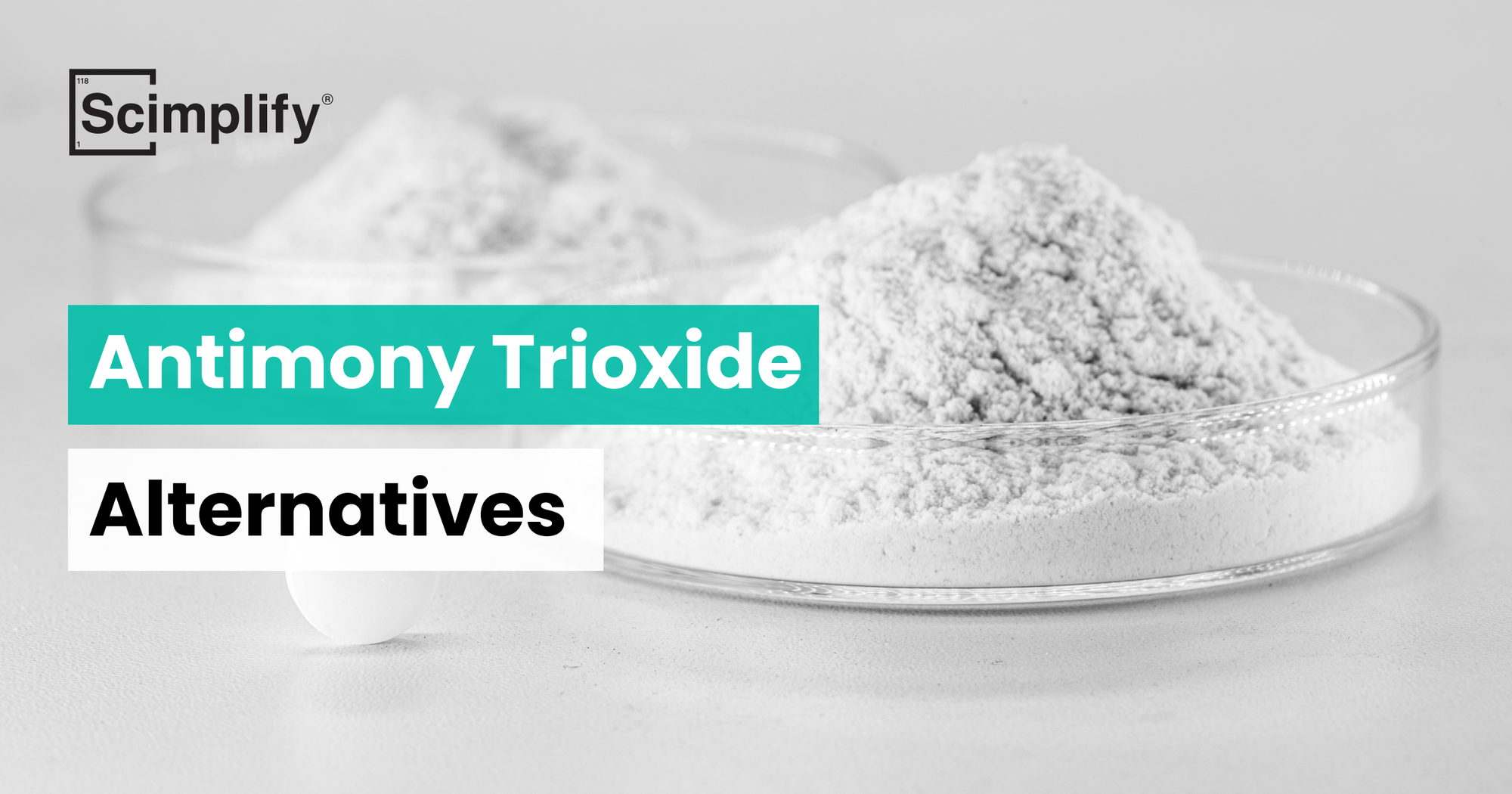Antimony Trioxide (Sb₂O₃) is a white, crystal-like powder used as a flame retardant synergist and functional additive in plastics, rubber, textiles, glass, and electronics. Its ability to enhance fire resistance synergistically, particularly when mixed with halogenated compounds, makes it a go-to in various industries. Apart from fire safety, it also catalyzes pigment manufacturing and glass fining.
Sb₂O₃’s effectiveness also poses potential concerns of human health risks through inhalation, prolonged exposure, and flagged environmental persistence. With industries seeking the adoption of safe and sustainable materials, coupled with tighter global regulations, many industries are reevaluating the usage of antimony-based compounds and seeking alternatives that do not compromise performance.
Zinc Borate
Zinc Borate has an impact on flames and smoke as an inorganic retardant and suppressant. People use it with systems containing halogens or free from them. It releases water and forms a protective, glass-like layer when heated.
Pros:
- Safe and free from halogens
- Stops smoke well
- Works great with other flame stoppers like ATH and APP
Cons:
- Needs a lot to stop the flames
- It can hurt how strong and explicit the materials are
- Doesn't work for all polymer systems
Explore manufacturing and buying options for Zinc Borate.
Aluminum Hydroxide (ATH)
Aluminum Hydroxide comes from minerals and doesn't have halogens. It breaks down, soaking up heat and releasing water vapor. This cools what's underneath and thins out gases that burn.
Pros:
- Suitable for the Earth and easy to find
- Cheap and safe
- Stops both flames and smoke
Cons:
- Needs a lot (up to 60%) to work well
- Changes how plastics work and feel
- Not a good fit for high-heat plastics
Magnesium Hydroxide (MDH)
MDH functions similarly to ATH, though higher temperatures decompose it. This property makes MDH more suitable for plastics that require high temperatures during processing.
Pros:
- Keeps its properties during processing at more than 300°C
- Non-toxic, no halogens, and reduces smoke
- Suitable for wires & cables, automotive, and household appliances
Cons:
- Increased cost compared to ATH
- Difficult to achieve homogeneous dispersion in some polymers
- Requires surface alteration for improved compatibility
Explore manufacturing and buying options for Magnesium Hydroxide.
Ammonium Polyphosphate (APP)
APP is a halogen-free flame retardant, often integrated into intumescent systems. APP promotes char formation, which aids in the development of protective foam layers when exposed to fire.
Pros:
- Exceptional for thermoplastics, paints, and coatings
- Low smoke release and halogen-free
- Good synergy with melamine compounds
Cons:
- Sensitive to moisture, can hydrolyze in humid environments.
- Not suitable for non-intumescent systems
- May impair the color and transparency of polymers
Phosphorus-Based Compounds (e.g., DOPO, RDP)
Used in engineering plastics and electronics, these flame retardants are low-dose yet provide high resistance to flames while emitting low smoke.
Pros:
- Requires low loading with high efficiency
- Halogen-free and thermally stable
- Adheres to global standards (RoHS, REACH)
Cons:
- Higher cost than traditional flame retardants, like Sb₂O₃
- Some variants are chemically reactive or moisture-sensitive
- Limited availability in some markets
Melamine Derivatives (e.g., Melamine Polyphosphate)
Melamine-based compounds are compressed nitrogen-containing flame inhibitors that are frequently employed in intumescent systems due to their synergistic effect when combined with phosphorus compounds, such as APP.
Pros:
- Eco-friendly, Non-halogenated and low-smoke
- Improves and protective char formation
- Coatings, textiles, and plastics
Cons:
- Inadequate efficacy alone needs synergy with other FRs
- Low thermal stability for high-temperature applications
- Possible negative impacts on processing conditions and mechanical properties
Red Phosphorus
Red Phosphorus is a robust flame retardant used primarily in engineering plastics, such as polyamides. It's highly efficient, but because it can be reactive, it usually comes stabilized or encapsulated.
Pros
- Works at low concentrations
- Excellent for high-heat applications
- Free from halogens and low smoke generation
Cons
- Reactive in raw form, needs special handling
- Can oxidize or degrade if not adequately protected
- Not suitable for transparent or aesthetic finishes


